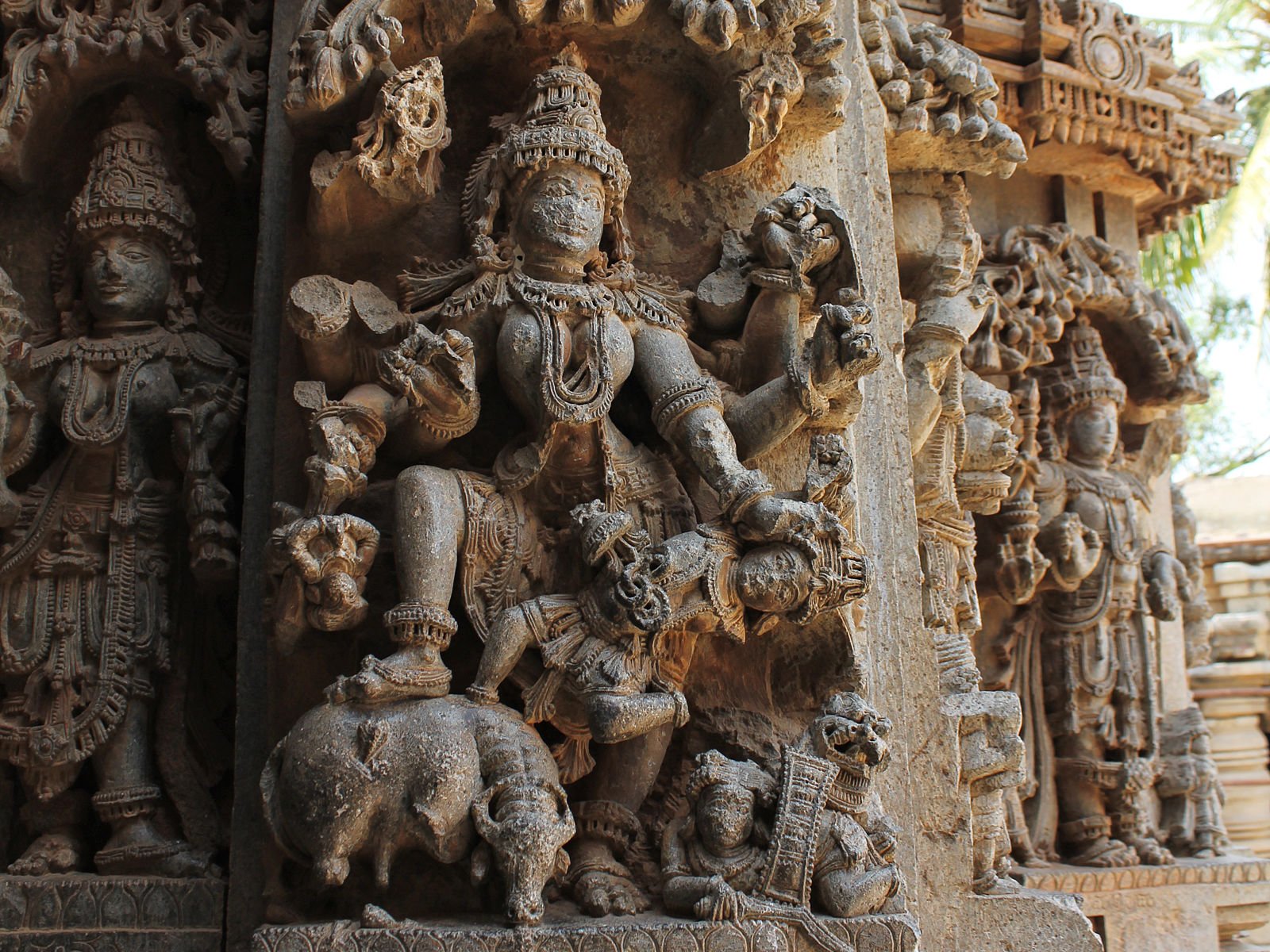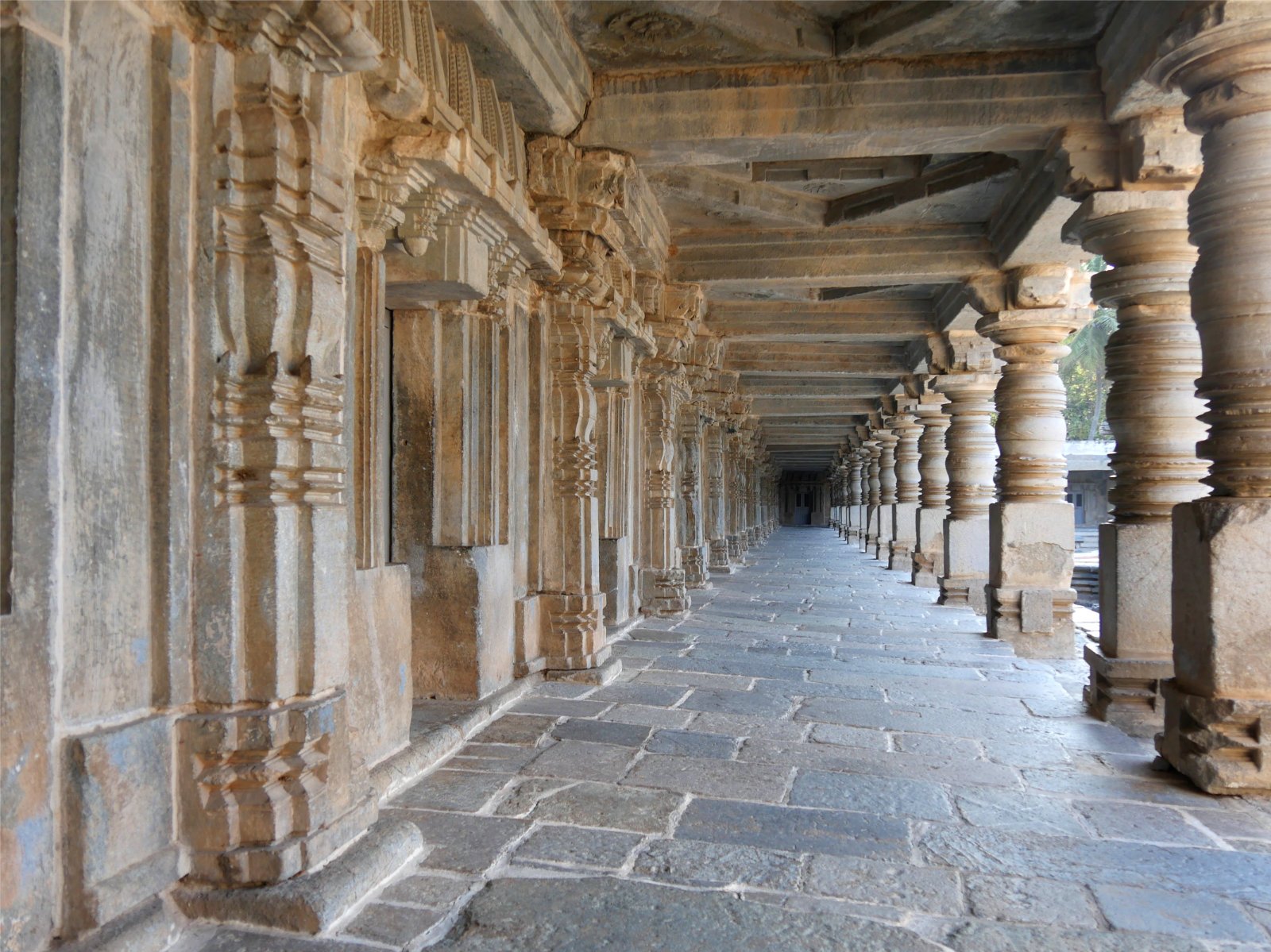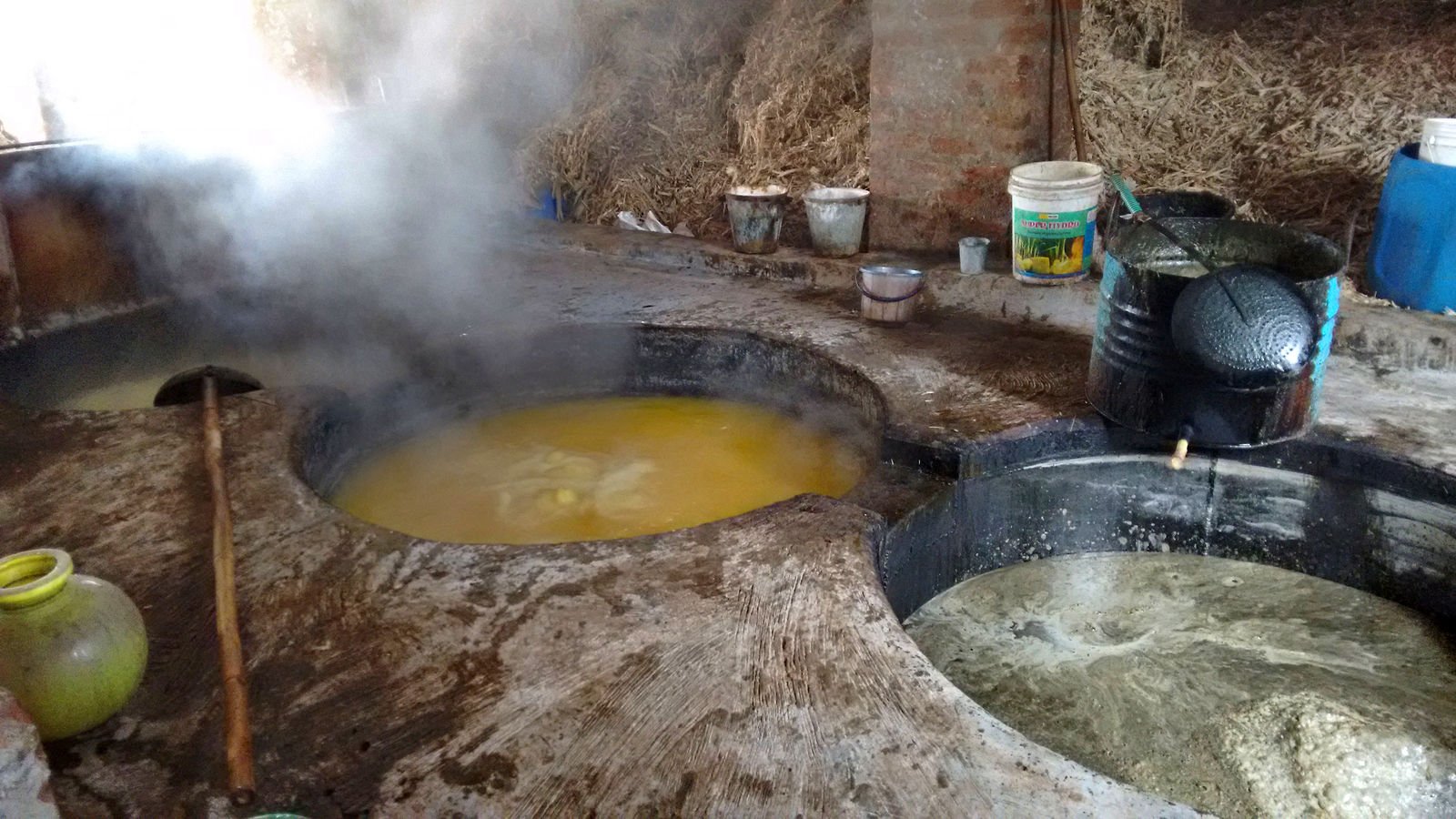Somnathpur
The temple at Somnathpur, Karnataka, is a masterpiece of Hoysala architecture. Its star-shaped layout and intricate stone carvings, built primarily of soapstone, also known as chloritic schist that enabled sculptors to create incredibly detailed designs. The outer walls are decorated with intricately carved sculptures depicting various deities, mythological scenes, and celestial beings, each a masterpiece in its own right. The temple's ceilings feature finely detailed geometric patterns and floral motifs.
The Cauvery River irrigates the agricultural landscape around Somnathpur, and a lot of sugarcane is grown there. Jaggery production is a cottage industry in this area.
Chennakeshava Temple






Jaggery












Jaggery is a traditional unrefined sugar made of the products of sugarcane. Sugarcane is a native plant of India and is a tall perennial true grass which accumulates sucrose in its stem. The plant is one of the most efficient photosynthesizers in the plant kingdom and is the world's largest crop by production quantity. Cane accounts for 80% of sugar produced in the world.
Sugarcane, cultivated in tropical areas with ample water supply from irrigation or monsoons, is harvested by hand in India. Harvesters use cane knives or machetes to cut the cane just above ground-level. The cut and cleaned sugar cane is then fed into a crusher. The extracted sugarcane juice is boiled in large iron vessels until it thickens to a fudge-like consistency. It is then poured into wooden moulds where it solidifies.
